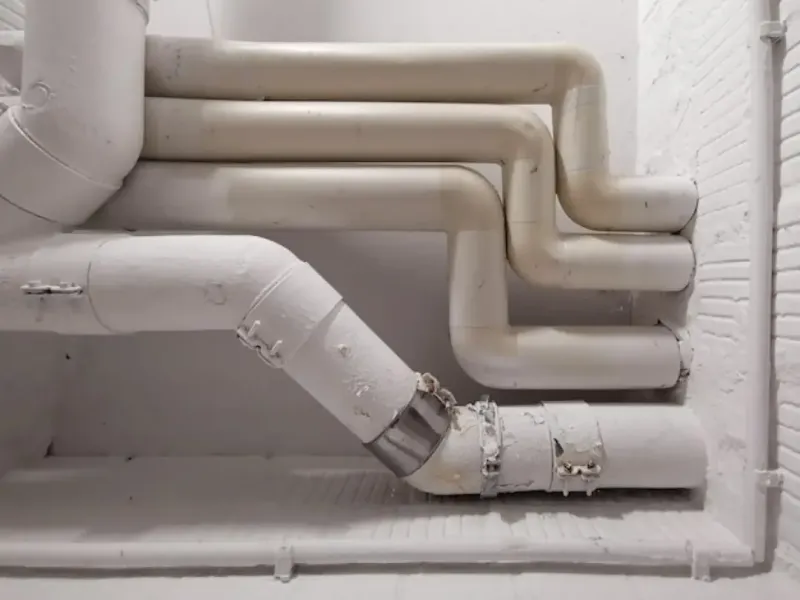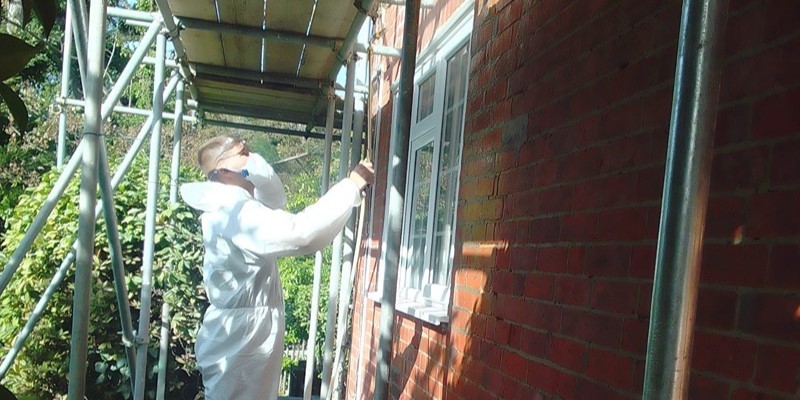Find out which methods are used to control damp in your UK home. Understand the importance of proper drainage, ventilation and professional tips for damp-proofing.
Understanding Different Types of Damp
When you're looking to protect a property from structural damage and maintain a healthy premises, it may be wise to begin by understanding the different types of damp can help you address issues faster. Rising damp occurs most commonly when moisture from the ground travels up the walls, it usually leaves peeling wallpaper, tide marks, and damp patches on the lower sections of your walls.
Penetrating damp is often a result of water entering your building from external sources, for example, faulty roofing, leaking gutters, cracked brickwork, fusty odours, and mould growth. The most commonly found type of damp is condensation, and this is when warm air meets cold surfaces, creating water droplets. These water droplets can grow into black mould and mildew, especially in areas that are poorly ventilated places, like the corners of walls.
Once you're able to properly identify the specific type of damp that is negatively impacting your property or site, you'll be able to identify the most suitable treatment for a dry, comfortable home and no risk of deterioration.
Maintaining Proper Drainage Around the Property
For proper drainage throughout and around your building or household, maintenance is necessary and will make sure you avoid damp issues, foundation problems, and water damage.

The most effective drainage systems can direct rainwater away from your home or property, and this reduces risks like soil erosion and flooding.
The best thing to do is to keep downpipes and gutters completely clear of debris, and this will make sure all water flows freely without overflowing, which can lead to penetrating damp.
If you're looking to further help manage the excess water, especially in areas prone to pooling, installing soakaways, French drains, or drainage channels can be the best thing to do.
Frequently inspecting your property's drainage system and addressing any much-needed repairs as quickly as possible will help you protect your home from any moisture-related issues and help you keep the foundation of your building stable and dry.
Improving Ventilation in the Property
By finding the best ways to improve your property, you can reduce condensation, maintain good air quality, and prevent any damp-related issues. Poor airflow can often result in moisture build-up, which causes growth of mould, damaging ceilings, wooden structures, and walls.
You can tackle these issues yourself by regularly opening windows, especially in areas with a much higher moisture or water content, like laundry rooms, kitchens, and bathrooms.
If you have vent slots above your windows you can also leave these ajar, doing this will help circulate fresh air and remove humidity. Trickle vents and extractor fans are, again, a great way to make sure that stale, damp air is replaced without too much heat loss that it would put your energy bills at risk of increasing.
Another way to increase the ventilation levels in your home is by keeping chimneys and air vents unblocked, that way you won't find damp patches or crystallisation within your home or chimney breasts. You can also use dehumidifiers wherever necessary as an addition to all other methods, and this can help regulate indoor moisture levels and has a number of health benefits too!
A well-ventilated home protects the property from structural issues and dampness, but also creates a more comfortable or healthier living environment for occupants.
methods of Addressing Rising Damp
To stop moisture from heavily impacting your walls and interior spaces, a combination of rising damp treatments and prevention methods will be required.
One of the most commonly used solutions is to install a DPC (Damp-Proof Course) into your brickwork. This is a barrier made of various materials like bitumen, slate, or plastic to prevent water from rising up through the ground.

In circumstances where existing DPC is missing or has failed, chemical injections can then be used, and these create a brand-new barrier by injecting water-repellent solutions throughout the lower sections of the wall.
Other methods of addressing damp involve improving the drainage and ventilation systems throughout your property to get rid of excess moisture. Modifying the foundation of a building to make sure the external ground levels are much lower than the internal floors, as this will prevent any water from seeping through the walls or along the ground.
Also, during the construction or decorating process of any property, it may be wise to use specialist plaster or waterproof coatings, as these can help protect the internal surfaces while the underlying issues are treated first. Regular maintenance and fast action at the initial sign of damp or mould will help you prevent additional structural damage.
Seeking Professional Damp Treatment Services
Issues of damp and mould can be a task that you can carry out yourself if you have the products and know how to replicate the treatment process. However, because damp issues can be a health risk and sometimes, they can be structurally complex, you may need the assistance of a local professional. Seeking professional damp treatment work is always best, as they can effectively identify and resolve damp issues before they have the opportunity to worsen.
Experienced specialists will assess the severity of the problem, diagnose the cause, and recommend the most fitting treatment for the problem. Sometimes this can involve applying waterproof coatings, improving the ventilation throughout your home, or by installing new damp-proof course.
Professionals used advanced tools, for example, thermal imaging and moisture meters, which are used to detect any hidden damp throughout a property. With these devices and pieces of equipment, professionals can come to a more accurate diagnosis and this will result in more targeted, effective solutions.
By hiring experienced experts, homeowners can prevent a series of costly structural repairs and protect their property's long-term structural integrity, as well as their overall health. You'll find that professional damp treatment provides more guarantees on the work carried out, and you can rest assured that the issues has been properly addressed.
Whether you're dealing with penetrating damp, rising damp, or condensation, contacting local professionals for help or advice might be the best way to prevent future problems and eliminate as much moisture in your home as possible.
{company_name are damp treatment professionals who can help you get rid of any damp issues on your property site or throughout your home. We tackle damp, mould, and know how to address the structural issues that may come with it.



